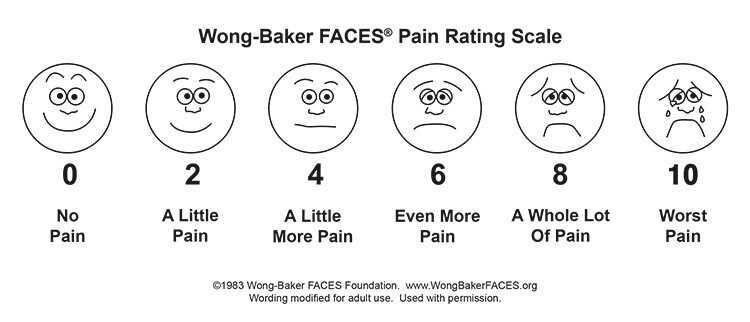Managing Pain After Surgery
Pain
After your surgery, you will still have some post-surgical pain or discomfort. Depending on the type of surgery, your pain may only last a few days but it can also last longer. Your comfort is our priority and it is important to us that your pain is well managed.
Your surgeon will prescribe pain medication (which may begin with a combination of Tylenol and a Narcotic) or over the counter pain medication depending upon the type of surgery. To ensure better control of pain, take medication as prescribed the moment you start to experience discomfort/pain. It usually takes 30-45 minutes before pain medication starts to work. Ignoring pain until it is severe causes more discomfort and requires more medication for pain management.
The goal of pain management is not to make your pain a 0 out of 10. The goal is to reduce your pain to a level at which you are safely able to do your daily activities. For most patients, this is between a 5 – 7 on the pain scale.

After surgery, tell your care team:
- If your pain level is rising above a 5 out of 10 on the pain scale.
- If your pain is not responding well to medication.
- If you are experiencing a new type of pain that wasn’t there prior to surgery.
- If you feel you are experiencing any side effects from the pain medications you are taking.
Moving Around After Surgery: Early Ambulation Plan
Now that your surgery is done, it’s time to get moving. Your recovery depends greatly on your active involvement in your healing plan and this includes getting up and walking the day of your surgery.
Walking soon after spinal surgery is one of the most important things that you can do to speed your recovery process and prevent complications. The numerous benefits of early walking include:
- Enhanced muscle tone
- Faster wound healing
- Improved blood flow
- Improved lung function
- Shorter hospital stay
Early walking after spinal surgery helps prevent many surgical complications, including:
- Blood clots
- Infections
- Pneumonia
- Urinary retention
- Urinary tract infections
The hospital nursing team, Physical Therapy and/or Occupational Therapy will all be available to help you get moving and guide you through early ambulation. At first you may just get up and walk from the bed to your chair to have a meal or from the chair to the restroom. Every little bit counts! Before long, you will be able to increase your activity to longer increments of time. Just remember, it is important to balance activity with periods of rest. Too much of either one can slow your progress, so listen to your body and keep working on your continued progress.
